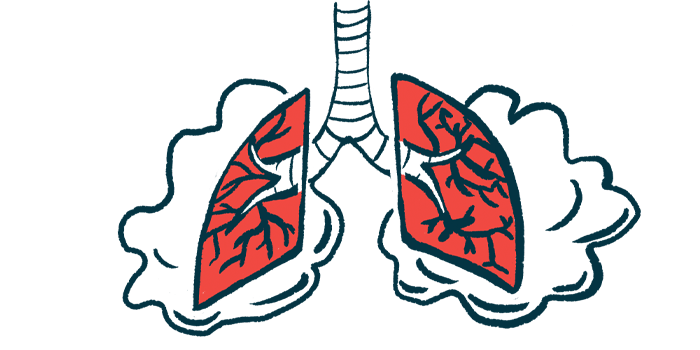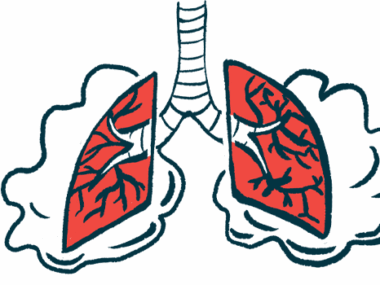Spinraza may help lung function, delay need for breathing aid
Study finds treatment helps in SMA types 2, 3
Written by |

Treatment with Spinraza (nusinersen) may help stabilize lung function in people with spinal muscular atrophy (SMA) types 2 and 3, a study suggested.
“Treatment of SMA types 2 and 3 with nusinersen may stabilize respiratory muscle strength and delay [noninvasive ventilation] dependence, despite progressive restrictive lung disease,” the scientists wrote. “Integrating pulmonary monitoring, orthopedic management, and early interventions to provide airway clearance and ventilatory support are essential for optimizing outcomes.”
The study, “Respiratory effects of nusinersen treatment in pediatric patients with spinal muscular atrophy types 2 and 3,” was published in the European Journal of Pediatrics.
SMA is caused in most cases by mutations in the SMN1 gene. This leads to low levels of the SMN protein, which is essential for the survival of nerve cells that control movement. Spinraza, which works to boost SMN protein levels by binding to a backup gene called SMN2, is the first therapy to be widely approved to treat all types of SMA. Studies have shown that Spinraza can slow disease progression, helping patients retain or improve motor function.
The main SMA symptom is muscle weakness, which can affect muscles throughout the body, including the respiratory muscles needed to pull air in and out of the lungs. This can lead to difficulty breathing, with some patients requiring interventions such as mechanical ventilation to ensure their bodies get enough oxygen.
3-year study looks at patients with milder disease
Some studies have looked at the effects of Spinraza on lung function in SMA, but they have generally been short term and focused on patients with type 1 disease, where symptoms manifest within the first six months of life. Researchers in Israel reported on Spinraza-treated patients with milder forms of SMA.
“Short-term studies in SMA1 patients suggest that nusinersen [Spinraza] stabilizes respiratory function, thereby preventing expected decline, although long-term effects remain unclear [and] data on the milder forms SMA types 2 and 3 are limited,” the scientists wrote. “We therefore conducted this study to [evaluate] pulmonary outcomes in pediatric patients with SMA type 2 and 3 who are under nusinersen treatment.”
The study looked at 15 people with SMA type 2 and 13 with SMA type 3. In SMA type 2, symptoms typically manifest between six and 18 months of age, and patients are generally able to sit unsupported but are unable to walk. SMA type 3 manifests later in childhood: Kids with this form of SMA often can walk early in life, but without treatment generally lose that ability.
Study participants’ mean age at SMA diagnosis was 3.5. The mean age at which they started Spinraza was 13.8. Most required breathing assistance by the time they started treatment.
Three-year data showed a significant decline over time in forced vital capacity (FVC), a measure of lung function based on how much air someone can exhale in a forceful breath. But all other lung function measures, such as maximal inspiratory pressure (MIP) and maximal expiratory pressure (MEP) — measures that assess how forcefully respiratory muscles can move air in and out of the lungs — were stable over three years of Spinraza treatment.
Peak cough flow (PCF), which assesses how forcefully patients can cough, remained stable over three years with Spinraza treatment, and the researchers also noted a trend toward fewer respiratory hospitalizations with long-term Spinraza treatment.
“Our findings indicate a stabilization of respiratory muscle strength in parallel with progressive restrictive lung disease characterized by a decline in FVC but preservation of MIP, MEP, and PCF,” the researchers wrote.
The scientists noted that the decline in FVC may have less to do with spinal problems. Most of the patients in this study had scoliosis (abnormal sideways curvature of the spine), which can put pressure on the chest that makes it physically harder for the lungs to fill up with air. These findings highlight the importance of orthopedic interventions to manage scoliosis, as such interventions may help patients breathe easier, the researchers said.
Before starting on Spinraza, six of the patients used noninvasive ventilation, and eight used cough-assist devices. After three years on Spinraza, a seventh patient started using ventilation and six others started using cough-assist devices. All patients could eat unassisted prior to Spinraza and were still able to do so three years later.
“While our findings suggest that nusinersen provides meaningful respiratory benefits, further prospective research is needed to clarify its long-term impact on pulmonary function and disease progression in pediatric patients with SMA types 2 and 3,” they wrote.
Spinraza is sold by Biogen. The company was not involved in the study, which was funded by Tel Aviv University.







